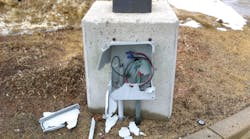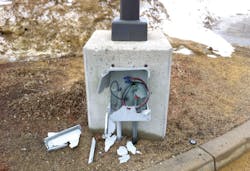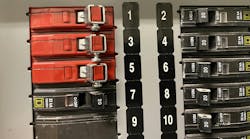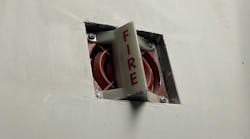How well do you know the Code? Think you can spot violations the original installer either ignored or couldn't identify? Here's your chance to moonlight as an electrical inspector and second-guess someone else's work from the safety of your living room or office. It's your turn to identify the violation.
Hint: Broken promises
April Winners
Our three winners this month were Blaze Bishop, a project engineer with Capital City Electric of New Albany, Ohio; Kirby O’Neal, an electrician in the Engineering Department of the Carl Vinson VA Medical Center, Dublin, Ga.; and Jeremy Taylor with Desert Ridge Electric LLC of Tucson, Ariz. Each of them was able to correctly identify the NEC violations in this photo.
Section 300.4(D) requires that this NM cable be positioned so that it is at least 1¼ in. from the nearest edge of the metal framing member where nails or screws are likely to penetrate. If the cable cannot be spaced to the left, right, or back far enough from the framing member to meet this requirement, then the cable must be
protected by a steel plate, or a sleeve of at least 1/16 in. thickness, or some other protection of equal effectiveness. When the sheetrock contractor comes to install the sheetrock, he could easily damage this NM cable if he is not perfect with his positioning of the fastening screws.
Another problem I can point out is the gaping hole that was blasted in the cinderblock wall in order to accommodate the depth of the box. This giant hole can compromise the fire-resistance rating of this wall assembly. Section 300.21 requires openings around electrical penetrations to be firestopped with approved materials and methods that will maintain the fire-resistance rating.






